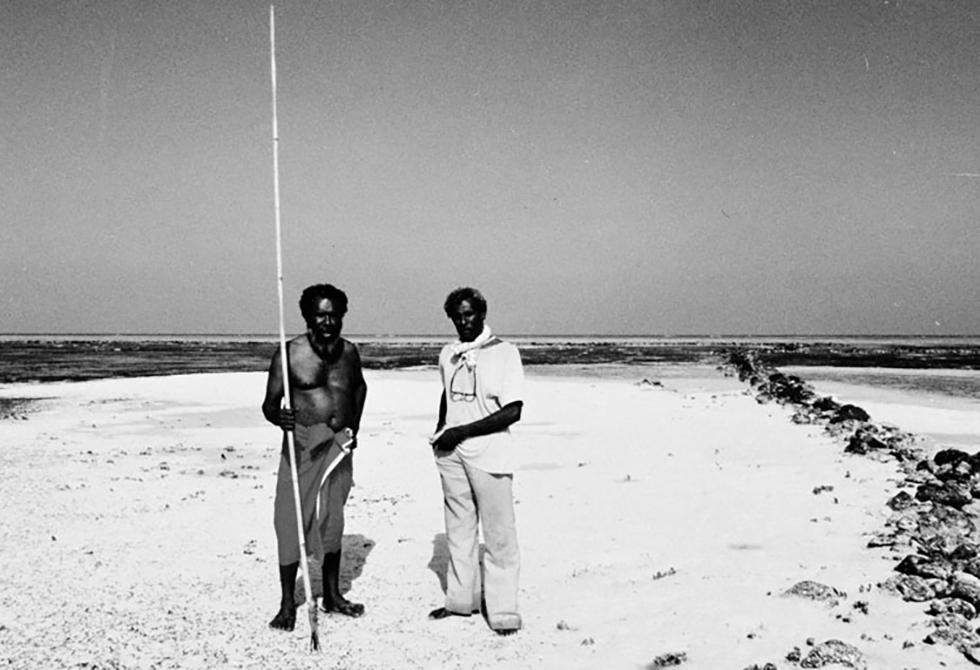


About this record
This black-and-white photograph shows Eddie Mabo with his friend and neighbour Jack Wailu on Mer (Murray Island) in the Torres Strait Islands, in September 1989. The men stand on the sand facing the camera with the sea in the background. Mabo, on the left, is wearing a cloth sarong, is bare-chested and holds a long fishing spear. This spear is typical of the Torres Strait Islands and is made from a length of bamboo with wire prongs at the end. In the past the prongs were made of sharpened wood. Wailu is wearing white trousers and a t-shirt with spectacles hanging on his chest and what appears to be a scarf around his neck. On the right, a row of rocks marks the edge of a traditional fish trap: at high tide the sea covers the traps and fish are caught in them as the tide recedes.
Educational value
- This photograph shows Edward ‘Eddie’ Koiki Mabo on part of his traditional lands three years before the historic decision that recognised the Meriam people’s claim to their land. Known as the ‘Mabo case’, the High Court of Australia ruled that the Meriam people had had a continuing occupation and connection with their land since before white settlement and that they had the right to have their ownership recognised in law under the concept of ‘native title’.
- The High Court’s decision overturned the concept of terra nullius or ‘land belonging to no-one’. ‘Terra nullius’ was an interpretation of British common law used to justify British occupation of uninhabited or barbarous land. In the Gove case of 1971, ’terra nullius’ had been used to reject the Yolgnu people’s claim, through the Yirrkala Bark Petition, to native title. The Mabo decision overturned this, changing the foundation of land law in Australia.
- The land seen here is on Mer (Murray Island), one of the Torres Strait Islands inhabited by the Meriam people for thousands of years before European settlement of Australia. Europeans began to settle on the island in 1871 and the Queensland Government began to annex the islands in 1872. By 1879 they had taken control of the majority of the remaining islands in the Torres Strait. The Meriam people continued to live there but— until the Mabo decision—their land was deemed to be owned by the Crown.
- Eddie Mabo died in January 1992, five months before the court ruled in his favour and ten years after the case had begun. Jack Wailu was an Elder and an important keeper of customs on Mer. He was also a friend of Mabo and gave evidence in support of Mabo’s claim to the High Court. In 1995, after Mabo’s tombstone in Townsville was vandalised, his family decided to take his remains back to Mer, and Wailu played a prominent role in the burial ceremonies.
- Although it is clear from this image that the sea plays a vital role as a source of food, and was originally included in the claim application, it was not part of the final claim in the Mabo case. The ruling of the court was limited to land above the high-water mark.
Acknowledgments
Reproduced with permission of Trevor Graham, Yarra Bank Films Pty Ltd.
Related themes
Need help with your research?
Learn how to interpret primary sources, use our collection and more.





